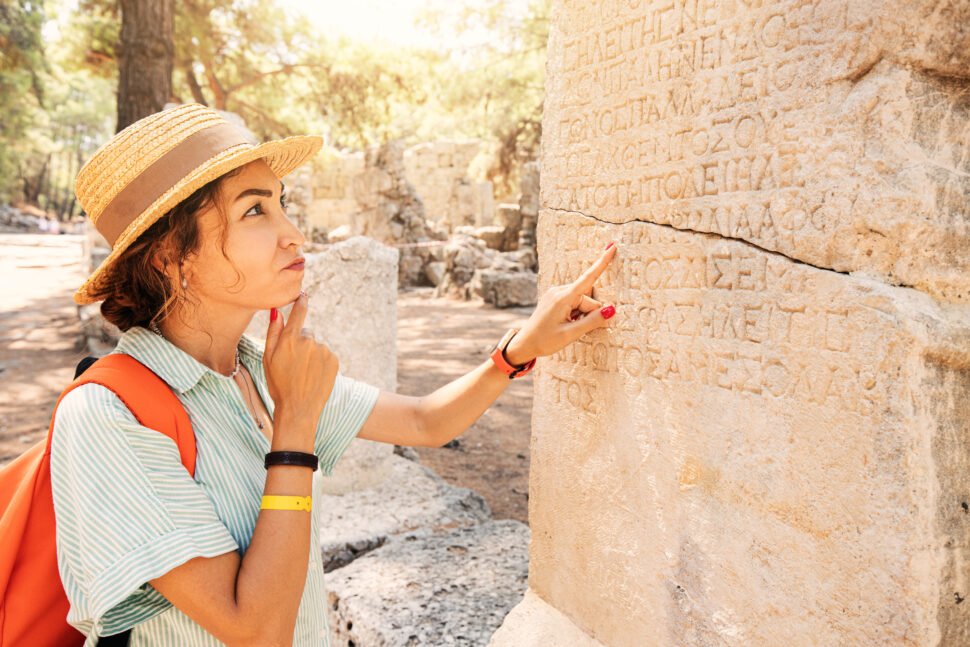In the dynamic realm of digital marketing, where the language can often seem like a code of its own, accountants and accounting firms find themselves facing a unique set of challenges. Whether you’re a seasoned financial professional or a firm looking to enhance your online presence, grasping the intricacies of digital marketing terminology is pivotal.
Our comprehensive guide is tailored specifically for accountants, unraveling 47 essential online marketing terms from A/B Testing to Wiki. Join us on a journey through the alphabet as we demystify the language of digital marketing, providing you with the key insights needed to navigate the digital landscape successfully.
47 Online Marketing Terms You Need to Know
A/B Testing – Comparing different versions of the same campaign to see which one performs better (ie using two different email subject lines to see which one earns more opens).
AdSense – Google’s platform that allows companies to earn revenue from traffic on their websites.
AdWords – Google’s Pay-Per-Click advertising platform that helps you place ads on search engine results pages.
Anchor Text – The ‘clickable’ text holding a hyperlink to another page or site, usually blue and underlined. For Search Engine Optimisation (SEO), it is best practice for the anchor text to be relevant to the page it is linking to.
Backlink – A link from one web page to another web page. Inbound links or backlinks from another website to your own pages will help increase your search engine ranking if they are from a quality source and relevant to the content.
Blog – Usually informal and conversational in tone, a blog is a regularly updated content that should be engaging or informative. The collection of articles or posts can act as a resource centre on a subject or industry. Blogs are usually added to frequently, with the most recent post displayed first. Companies use blogs to tell others more about their services or information related to their services, but the style is informative or fun rather than a hard sell.
Bounce Rate – The percentage of website visitors who leave after a single page view, straight from the landing page. A high bounce rate shows low engagement from visitors.
Channel – In marketing, the method of distribution or media used to reach potential clients, such as your website, blog, or social media pages, email, digital advertising.
Click-thru Rate (CTR) – The percentage of people who click on an ad or link after seeing it
Content – Any text, image, audio, video, or other media that’s intended to be used by your audience. Blogs, white papers, e-books, infographics, videos, sound bytes, and hard-copy collateral all count as content.
Conversion – The moment when a lead or prospect takes action, such as filling out a lead form or making a purchase
Conversion Cost – The cost of taking an individual from a prospective lead to their conversion
Conversion Rate – The percentage of people who take a proscribed action after visiting your site or interacting with your content.
Copy – The text portion of an advertisement or web page
Cost-Per-Acquisition – The number of leads or conversions you gained divided by the total amount spent on a campaign.
Cost-Per-Click (CPC) – Also known as pay per click (PPC), it’s a form of paying for digital advertising. You can calculate CPC by dividing the number of clicks an ad receives by how much you spent on the ad campaign.
CPM (Cost per thousand) – Another form of paying for digital advertising. You pay when your ad is viewed by 1000 people.
Frequency – The number of times a unique viewer sees your ad during a campaign.
Header – Head-line text in content describing the subject of the content. Headlines are significant for SEO
Hyperlink – A clickable link that takes the viewer to another web page.
Impression – The moment when a viewer comes in contact with your advertisement or web page.
Keyword – A term or phrase that users are most likely to use in search engines, using keywords in your content will help SEO
Keyword Density – The number of times a keyword appears in a blog article or web page. Aim for 1-2% keyword density (10-12 keywords per 1000 words).
Keyword Proximity – The distance between keywords in a search term as they appear in the content. Placement of keywords within the content.
Landing Page – The page visitors first land on after taking a particular action, such as clicking on an ad.
Lead – A prospective customer who has shown some engagement, exact definitions (level of engagement required to qualify as a lead) varies.
Link Farm – A website, or group, designed specifically to provide links to content. Link farms are not favourable for search engines, engaging with link farm websites is likely to damage your SEO.
Meta Description – Text summarising a page’s content that is displayed with the heading by search engines. Optimising the meta description with keywords is good for SEO.
Microblog – A special media platform that consists of short, punchy, frequent posts, similar to Twitter’s format.
Native Advertising – A paid advertisement that looks natural in the surrounding content.
No Follow – A link where the html code has been written to prevent search engine bots from following it.
Organic – Referring to events that occur naturally, without advertising or payment. Organic web traffic reaches your website without prompting or clicking through paid links or advertisements.
Paid Search – Paid advertisements within search engine results, likely to be PPC, pay per click.
Podcast – Digital audio content, usually updated regularly like a blog and available by subscription. Podcasts are made available online for download via iTunes or other app store, through a website or direct email.
Pop-up – An advertisement or call-to-action page that appears spontaneously in a separate window.
PPC – Pay Per Click, this form of advertising payment means you are charged for each time someone clicks on your ad.
Ranking – Where you appear on a list of search engine results.
Reach – How many people see your advertisement or content.
Retargeting – Tracking visitors to your site to target them with ads when they are on-line again
Search Engine Marketing – Also known as SEM, this is activity aimed at improving your website’s search engine ranking through optimisation and paid searches.
Search Engine Optimisation – Also called SEO, this practice primes your website and other content to be found by search engines and improve your ranking for specific searches leading to increased traffic to your website.
SERP – ‘Search engine results page’
Site map – A list of pages within a website that is meant to attract search engine crawlers to help correctly index those pages, also available to site visitors.
Social Advertising – Paying for advertisements on social media channels
Social Media – Web based applications hosting website ‘communities’ with user-generated content that allow for a free-flow exchange of ideas, content creation and sharing. Some of the best known include Facebook, Instagram, Twitter, Snapchat and LinkedIn.
User-Generated Content – A piece of content created by a user of a website or social network that is used for that website’s purpose. Wikis are a good example of user-generated content.
Webinar – An online seminar-style session that usually allows the virtual attendees to interact and ask questions.
Wiki – Informative internet ‘documents’ that are created collaboratively by and made available to the public. Wikis usually take the form of ‘how-to’s or help to answer questions. These documents are typically created by multiple people and can be edited by others, not just the creator of the Wiki.

